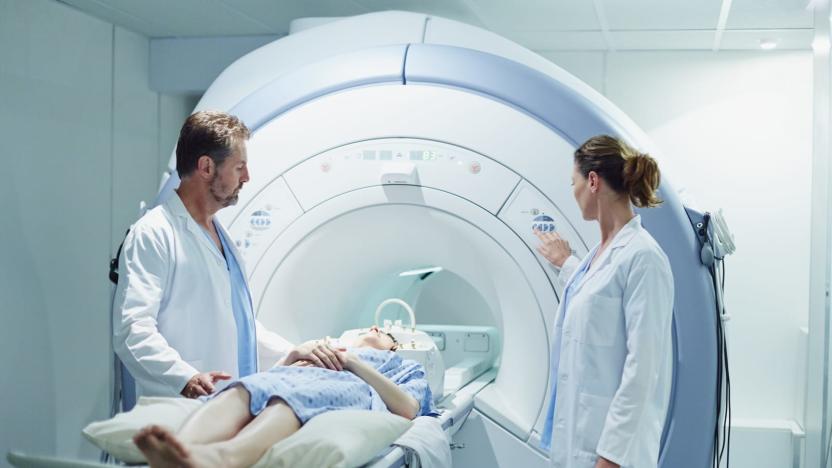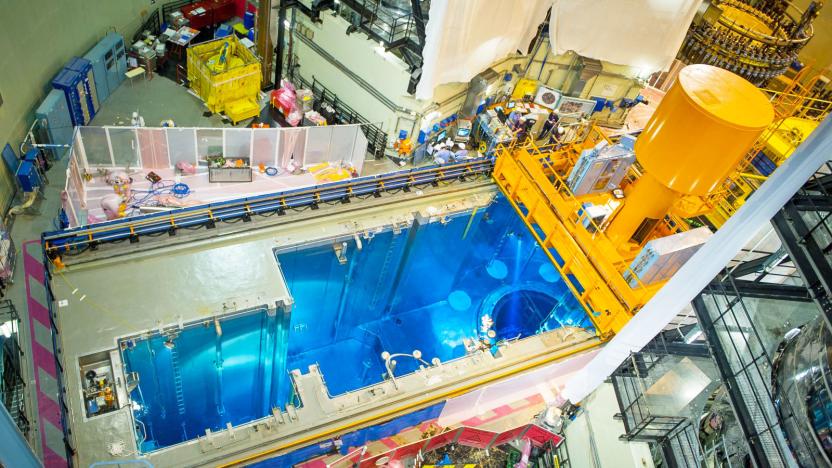uranium
Latest

Wisconsin firms hope to make radioactive isotopes for nuclear medicine (updated)
Certain cardiac stress tests and other nuclear medicine diagnostics depend on molybdenum-99, or Mo-99, a radioactive isotope that decays into the diagnostic imaging agent technetium 99m, or Tc-99m. The latter is used in more than 40 million medical imaging procedures each year, but Mo-99 is costly and difficult to make. Now, two Wisconsin firms say they've found a more efficient way to make the critical material.

Endless nuclear power can be found in the seas
Climate change is such an urgent issue that despite problems with radioactive waste, nuclear power is once again viable until renewable solutions like solar and wind are more widely adopted. The ocean is a good source of uranium fuel, but it exists in such small quantities that extracting it hasn't been economically feasible. However, Stanford researchers have developed a new technique that can capture up to three times more, meaning we might soon get a new source of uranium that could help keep CO2 in check.

Alt-week 8.11.12: Robo-billies, quasicrystals and radioactive art
Alt-week peels back the covers on some of the more curious sci-tech stories from the last seven days. It's not like we're trying to out-weird ourselves, it just, somehow, keeps happening. At least one of this week's offerings (we'll leave it to you to figure out which) will possibly be the creepiest thing we post all year. As for the rest, well it's slightly more palatable. We'll get uncharacteristically pumped about cycling, meet some extra-terrestrial quasicrystals and enjoy some art with X-men credentials. This is alt-week.

Electrified bacteria army kills uranium, gives Captain Planet a run for his money
A certain type of "hairy" bacteria may just be the answer to cleaning up radioactive spills. Scientists at the University of Southern California found that under certain circumstances, Geobacter sulfurreducens could make metals like uranium less soluble -- essentially turning the metal into hard droplets rather than being absorbed. Researchers discovered that by lowering the bacteria's temperature, it caused hair-like pili to extend, which enveloped the poison uranium and ultimately reduced it through long-range electron transfer. The breakthrough could help deplete sources of uranium or other radioactive isotopes where bacteria normally can't survive -- like from the Fukushima nuclear plant that devastated Japan earlier this year. Scientists believe they've only scratched the surface with this development and are optimistic about the future of bacteria "electromicrobiology," which we can only guess grew in popularity after this '80s classic hit the airwaves (video after the break).

Toshiba and Bill Gates-backed TerraPower discussing small-scale nuclear reactors
It would seem that Toshiba hasn't given up on its dream of producing a nuclear reactor for the home, and its latest potential partner counts quite the big name among its backers. Run by a former Microsoft exec and partially funded by Bill Gates himself, TerraPower is said to have opened preliminary discussions with Toshiba regarding a possible joint venture between the two companies. The aim is, predictably, to make safer, smaller, more socially acceptable, and just plain better reactors. TerraPower boasts its tech can run without refueling for up to 60 years on depleted uranium and Bill Gates has gotten enthusiastic enough about the whole thing to give a 30-minute talk on the matter. Click past the break for the video.



